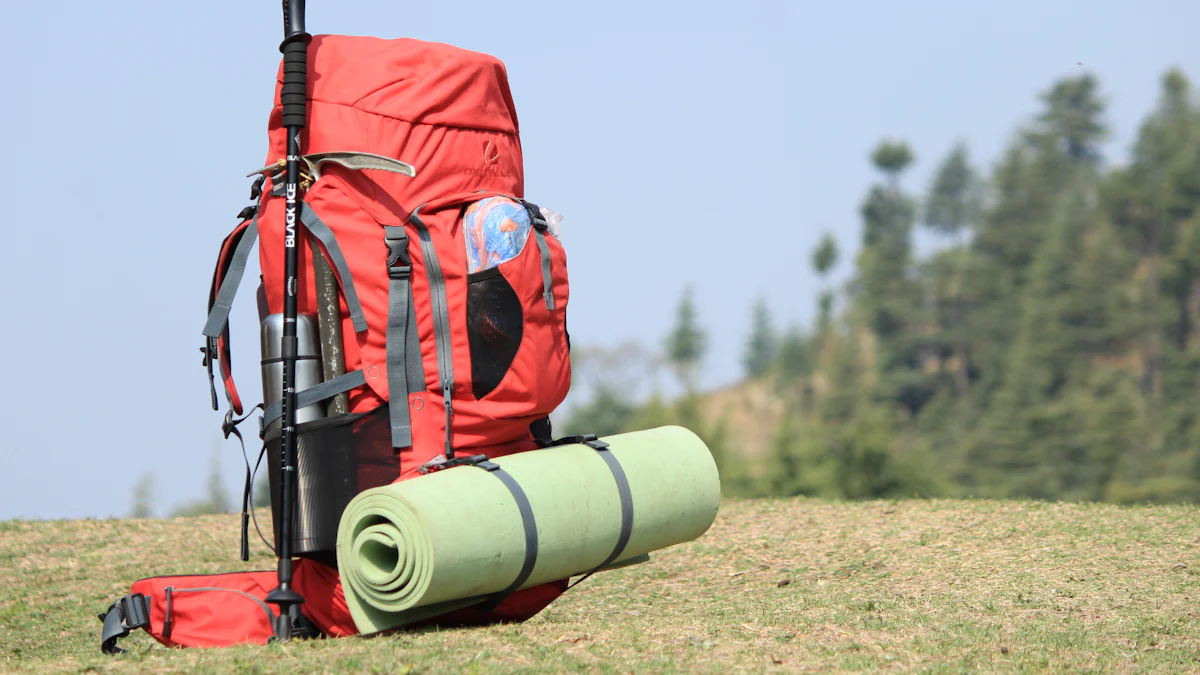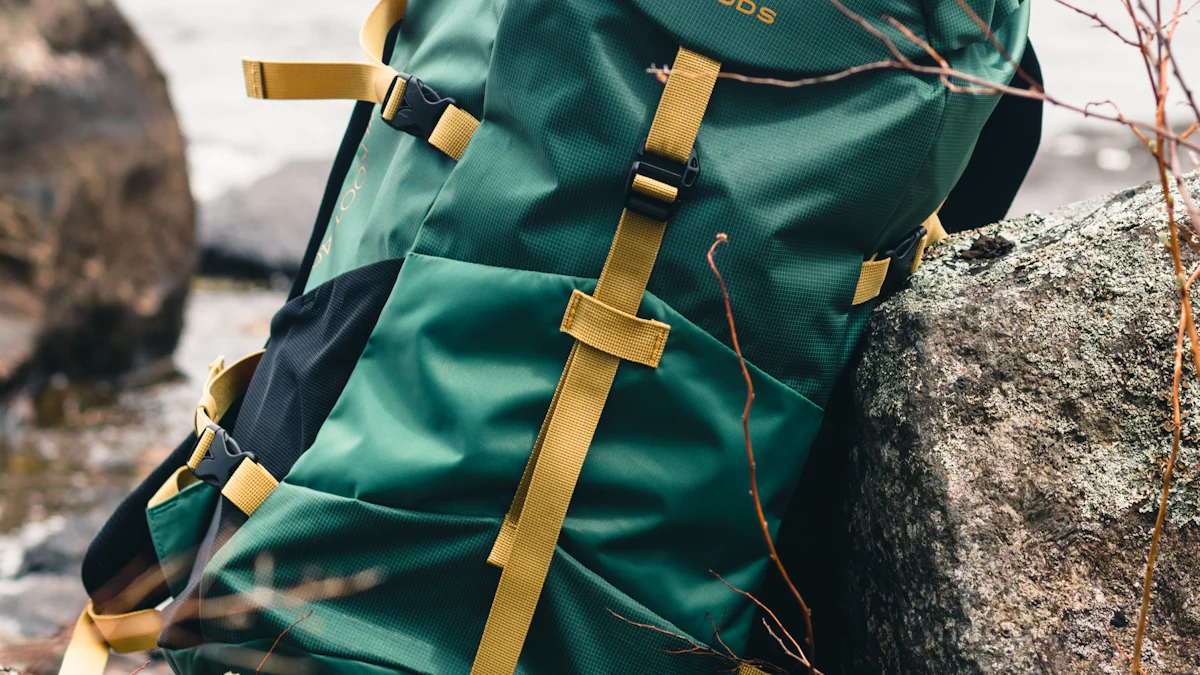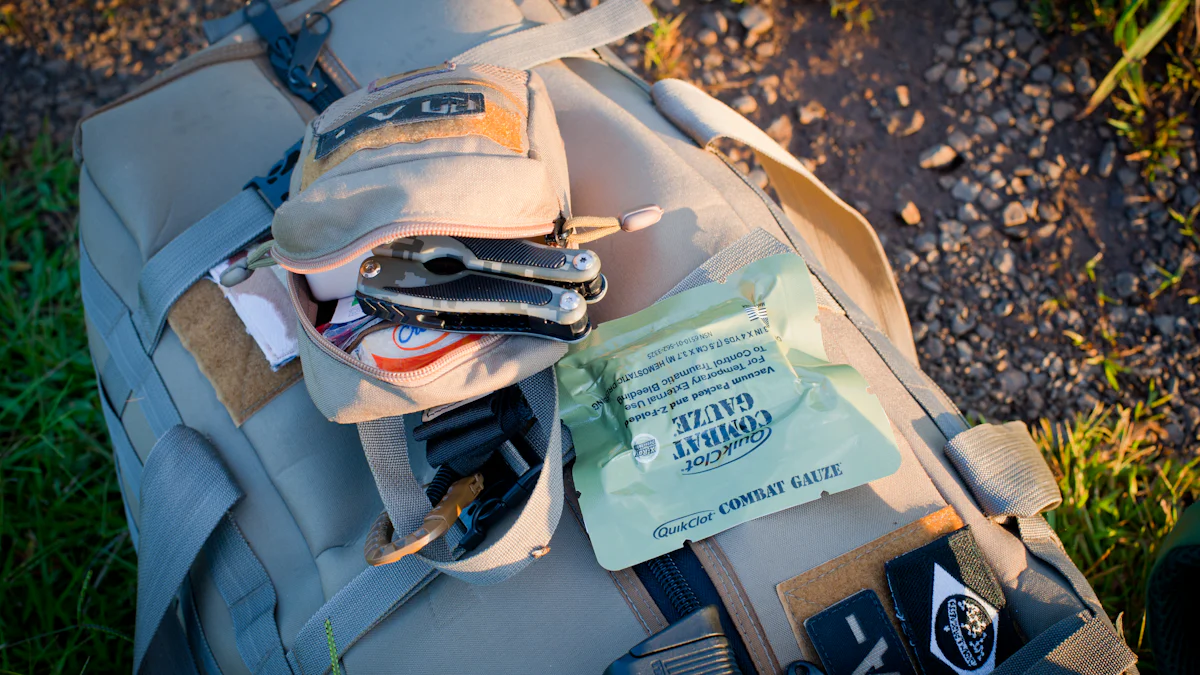Starting an Online Outdoor Gear Business in 2025

The outdoor industry is thriving, and 2025 is set to be a landmark year for entrepreneurs ready to dive in. With global revenue expected to reach $28 billion and an annual growth rate of 5.70%, the appetite for outdoor gear is at an all-time high. Whether it’s camping, hiking, or exploring, people are eager to invest in products that elevate their adventures. This makes it an ideal time to start up an online business focused on outdoor gear.
However, understanding your customers is crucial. Trends reveal that 38% of Gen Z shoppers prioritize a brand’s reputation and design over comfort. Additionally, 81% of consumers expect companies to emphasize sustainability. Brands like Patagonia and Finisterre are excelling because they align with these values. If you’re planning to start up an online business in this industry, staying in tune with these shifts is essential.
The possibilities are vast, but success begins with knowing your audience and delivering what outdoor enthusiasts truly desire.
Key Takeaways
Study the market to learn what your customers want. This helps you choose the right products and plan better.
Sell popular outdoor items like tents and flashlights. Make sure they are good quality and not too expensive to gain trust.
Create an easy-to-use website to show your products. A nice website makes shopping fun and brings people back.
Handle money carefully by making a budget and watching costs. This helps you buy stock and advertise without losing money.
Be flexible by watching trends and listening to customers. Change your products and plans to stay successful over time.
Start with Market Research
Before diving into your outdoor gear business, you need to lay a solid foundation with market research. This step helps you understand who your customers are, what they want, and how you can stand out in the outdoor industry.
Target Your Audience
Understand outdoor enthusiasts' needs and preferences
To succeed, you must know what outdoor enthusiasts are looking for. Are they seeking lightweight camping gear for long hikes? Or maybe they want eco-friendly products that align with their values? Start by identifying specific customer needs or pain points. For example, high-frequency outdoor enthusiasts often need durable, high-quality gear, while budget-conscious shoppers prioritize affordability.
Segment your audience by demographics and interests
Once you understand their needs, break your audience into smaller groups. Use factors like age, income, and lifestyle to create clear segments. For instance, Millennials and Gen Z are drawn to brands with strong reputations and sustainable practices. A table like this can help you visualize your audience:
Demographic Group | Description |
|---|---|
High-frequency outdoor enthusiasts | Regularly update their gear for frequent outdoor activities. |
Budget-conscious shoppers | Seek affordable, value-for-money options. |
Adventure seekers | Look for gear that enhances thrilling experiences. |
Nature enthusiasts | Prefer gear for activities like bird-watching or photography. |
By segmenting your audience, you can tailor your marketing efforts to meet their unique preferences.
Analyze Competitors
Research successful outdoor gear brands
Take a close look at brands that are thriving in the market. Companies like Patagonia excel because they focus on sustainability and design, which 81% of consumers now expect. Study their product range, pricing strategies, and marketing tactics.
Identify gaps in the market
Look for opportunities where competitors fall short. Are there underserved groups, like urban outdoor enthusiasts who value versatility? Or perhaps there’s a lack of affordable yet durable gear? Identifying these gaps can help you carve out your niche.
Study Market Trends
Explore emerging trends in outdoor activities
The outdoor industry is evolving. Younger generations are redefining outdoor activities, focusing on fitness and social experiences. Athleisure and versatile gear are becoming more popular. Brands that adapt to these trends will capture attention.
Adapt to consumer behavior changes in 2025
Consumer behavior is shifting. Millennials and Gen Z prioritize experiences over material goods. They also value authenticity and brand stories. If your outdoor gear business reflects these values, you’ll connect with your audience on a deeper level.
Market research isn’t just a step—it’s your roadmap to success. By understanding your audience, analyzing competitors, and staying ahead of trends, you’ll position your business to thrive in 2025.
Develop Your Outdoor Gear Product Line

Creating a winning product line is the backbone of your outdoor gear business. You need to focus on items that resonate with your audience while ensuring they meet the highest standards of quality and affordability. Let’s break it down step by step.
Choose the Right Products
Focus on high-demand items like flashlights and camping gear
Start by offering products that outdoor enthusiasts can’t live without. Popular options include:
Camping Products: Tents, sleeping bags, portable stoves, and lightweight cookware.
Trekking Poles: Durable and lightweight for hikers.
Flashlights: Compact, high-lumen models are always in demand.
Backpacks and Duffel Bags: Functional and durable for carrying gear.
These essentials are not just practical but also have a proven track record of strong demand in the outdoor industry.
Balance quality and affordability
Balancing quality and affordability is key to building trust with your customers. To achieve this:
Offer products that align with their values, such as eco-friendly options.
Position your items as long-term investments by emphasizing durability and craftsmanship.
When you deliver quality products at a fair price, you’ll stand out in a competitive market.
Prototype and Test
Ensure product durability and functionality
Before you bring a product to market, test it thoroughly. Start with rough prototypes to evaluate durability and functionality. For example, if you’re designing a flashlight, ensure it performs well in extreme conditions like rain or cold.
Gather feedback from potential customers
Involve your audience early. Share prototypes with outdoor enthusiasts and ask for honest feedback. This helps you refine your products and ensures they meet real-world needs. Plus, it builds excitement for your brand before launch.
Source Materials and Manufacturers
Find reliable suppliers
Reliable suppliers are essential for maintaining quality. Look for partners with industry certifications and a proven track record. Attend trade shows or explore online marketplaces to find the best options. Don’t forget to perform quality checks before committing.
Negotiate costs and delivery timelines
When negotiating with manufacturers, follow these steps:
Research potential manufacturers and verify their credentials.
Approach negotiations with confidence and professionalism.
Clarify all terms, including costs and delivery schedules.
Communicate regularly to monitor progress and address issues.
Strong supplier relationships will help you maintain consistent quality and meet customer expectations.
By carefully selecting your products, testing them thoroughly, and partnering with reliable suppliers, you’ll set your outdoor gear business up for success. Remember, every decision you make should reflect your commitment to delivering quality and value to your customers.
Build Your Online Presence

Building a strong online presence is essential for your outdoor gear business. It’s how you connect with customers, showcase your products, and stand out in the competitive outdoor industry. Let’s dive into the key steps.
Create an eCommerce Store
Choose the right platform (e.g., Shopify, WooCommerce)
Your eCommerce platform is the backbone of your online store. Popular options in 2025 include Printful, Printify, and Shopify. Each platform offers unique features. For example, Printful is great for high-quality prints, while Printify provides flexibility with its network of printing partners. Choose one that aligns with your business needs and budget.
Design a user-friendly website
A user-friendly website keeps customers coming back. Focus on these features:
Responsive Design: Ensure your site works seamlessly on all devices.
Intuitive Navigation: Organize products into clear categories like camping gear, flashlights, and backpacks.
High-Quality Images and Descriptions: Show your products in action with detailed descriptions.
Secure Payment Options: Build trust with reliable payment methods.
Customer Reviews and Ratings: Highlight testimonials to boost credibility.
A well-designed website makes shopping easy and enjoyable for your customers.
Establish a Brand Identity
Craft a memorable logo and tagline
Your logo and tagline are the face of your brand. They should reflect your mission and values. For example, if sustainability is your focus, use earthy tones and a tagline like “Gear Up, Go Green.” Keep it simple yet impactful.
Communicate your brand values
Show customers what your brand stands for. Use user-generated content like photos and testimonials to highlight real experiences. Write compelling copy that connects emotionally with your audience. For instance, share how your eco-friendly gear helps protect the environment. This builds trust and loyalty.
Leverage Social Media and Digital Marketing
Run targeted ad campaigns
Social media ads are a powerful tool for reaching your audience. Platforms like Instagram and Facebook let you target specific groups, such as adventure seekers or budget-conscious shoppers. Use eye-catching visuals and clear calls to action to drive traffic to your website.
Engage with your audience through content marketing
Content marketing helps you connect with customers on a deeper level. Create how-to videos showing your gear in action. Write blog posts about outdoor activities like hiking or camping. Share stories that inspire your audience to explore the outdoors. This positions your brand as an authority in the outdoor gear space.
By creating a user-friendly website, building a strong brand identity, and leveraging digital marketing, you’ll establish a solid online presence. This is the foundation for growing your outdoor gear business in 2025.
Plan and Manage Your Finances
Managing your finances is one of the most critical parts of your outdoor gear business. A solid financial plan ensures you stay on track and make smart decisions as you grow. Let’s break it down step by step.
Set a Budget
Estimate startup costs
Starting an outdoor gear business requires careful budgeting. Here’s a breakdown of typical startup costs:
Startup Cost | Average Amount Range (USD) |
|---|---|
Inventory of outdoor gear, apparel, and equipment | $50,000 - $500,000 |
Branding, website development, and digital marketing | $10,000 - $50,000 |
Licenses, permits, and regulatory compliance fees | $2,000 - $10,000 |
Warehouse or storage facility for inventory | $10,000 - $50,000 |
Initial marketing and promotional campaigns | $5,000 - $50,000 |
Total | $157,000 - $1,030,000 |
Knowing these numbers helps you plan your business effectively and avoid surprises.
Allocate funds for marketing and inventory
You’ll need to divide your budget wisely. Most outdoor gear businesses allocate 30-50% of their startup funds to inventory. This ensures you have enough stock to meet customer demand. Another 30-50% should go toward marketing. A strong marketing strategy will help you attract customers and build your brand.
Explore Fundraising Options
Compare bootstrapping vs. seeking investors
When it comes to funding, you’ve got options. Bootstrapping gives you full control over your business and encourages financial discipline. However, it limits your initial capital and may slow growth. On the other hand, seeking investors can accelerate growth and provide access to valuable networks. But it comes with trade-offs like sharing ownership and facing pressure from investors. Choose the option that aligns with your business plan and long-term goals.
Utilize crowdfunding platforms
Crowdfunding is another great way to raise funds. Platforms like Kickstarter let you showcase your products and connect with potential customers. A successful campaign not only raises money but also builds excitement around your brand.
Manage Costs and Revenue
Track expenses and profits
Keeping an eye on your finances is essential. Use financial software to track expenses and revenue. This helps you identify areas where you can cut costs or invest more. Staying organized ensures your business remains profitable.
Use financial tools for better decision-making
Financial tools can do more than track numbers. They help you forecast demand, reduce inventory costs, and optimize your marketing strategy. For example, analytics tools can improve your marketing campaigns, boosting conversion rates by up to 25%. They also help you streamline operations, saving up to 20% on overhead costs. These insights make your business more efficient and competitive.
By setting a clear budget, exploring funding options, and using financial tools, you’ll create a strong foundation for your outdoor gear business. Smart financial management ensures you can offer competitive prices while staying profitable in the outdoor industry.
Ensure Long-Term Success in Your Outdoor Gear Business
Building a successful outdoor gear business doesn’t stop at launching your products. Long-term success depends on how well you adapt, grow, and keep your customers happy. Let’s explore how you can achieve this.
Maintain Customer Satisfaction
Offer excellent customer service
Happy customers are the backbone of your business. To keep them coming back, focus on strategies that enhance their experience. Here’s a quick guide:
Strategy | Description |
|---|---|
Customer Loyalty Program | Reward repeat buyers with discounts or exclusive perks. |
Social Media Engagement | Interact with customers on platforms like Instagram to build relationships. |
Workshops and Events | Host events to teach gear usage and foster a sense of community. |
Rent-Then-Buy Options | Let customers try premium gear before committing to a purchase. |
These approaches not only improve satisfaction but also build trust in your brand.
Encourage reviews and testimonials
Positive reviews can do wonders for your credibility. Encourage customers to share their experiences by offering incentives like discounts on future purchases. Make it easy for them to leave feedback on your website or social media. Satisfied customers often become your best advocates, helping you attract new buyers.
Adapt to Market Trends
Stay updated on outdoor gear innovations
The outdoor industry is constantly evolving. Keep an eye on the latest trends, like inflatable diamond grid tents for quick setups or portable outdoor games that enhance the camping experience. Consumers also love eco-friendly products, so consider adding sustainable options to your lineup. Staying ahead of these trends ensures your brand remains relevant.
Adjust your product line based on demand
Pay attention to what your customers want. If you notice a spike in demand for lightweight flashlights or versatile backpacks, adjust your inventory accordingly. Use data analytics to track sales patterns and avoid overstocking or running out of popular items. This flexibility helps you meet customer needs and maximize profits.
Scale Your Business
Expand your product range
As your business grows, consider adding new items to your catalog. For example, you could introduce eco-friendly gear or offer rental options for specialized equipment. Over 70% of consumers prefer sustainable products, and online sales of these items have grown by 25%. Expanding thoughtfully can attract a broader audience and boost your revenue.
Explore new sales channels (e.g., Amazon, wholesale)
Don’t limit yourself to just one platform. Selling on Amazon or partnering with wholesalers can help you reach more customers. These channels offer exposure to a global audience, increasing your brand’s visibility. Diversifying your sales strategy also reduces risk and opens up new opportunities for growth.
By focusing on customer satisfaction, staying adaptable, and scaling strategically, you’ll position your outdoor gear business for long-term success. The outdoor industry is full of opportunities—seize them with the right strategies.
Starting your outdoor gear business might feel overwhelming, but you’ve got this! By researching your market, building a strong product line, and creating an engaging online presence, you’re setting yourself up for success. The outdoor industry is thriving, and there’s no better time to jump in. Take that first step today—whether it’s sketching out your product ideas or exploring eCommerce platforms. With dedication and the right strategies, your outdoor gear business can thrive and inspire adventurers everywhere. So, what are you waiting for? Let’s get started!
FAQ
How much money do I need to start an online outdoor gear business?
You can start with as little as $10,000 for a small-scale operation. Larger businesses may require $50,000 or more. Your budget depends on inventory, marketing, and website costs. Start small and scale as you grow.
What are the best-selling outdoor gear items?
Flashlights, camping tents, sleeping bags, and backpacks are always in demand. Lightweight and eco-friendly products are especially popular. Focus on high-quality essentials that solve common outdoor challenges.
Do I need a warehouse to store my inventory?
Not necessarily! You can start with a small storage space or use dropshipping. Dropshipping lets you sell products without holding inventory, saving you money and space.
How can I make my brand stand out?
Highlight your unique values, like sustainability or affordability. Create a memorable logo and tagline. Share your story and connect with customers through social media. Authenticity builds trust and loyalty.
Should I sell on Amazon or stick to my website?
Both options work! Selling on Amazon gives you access to a massive audience. Your website helps you build a loyal customer base. Start with one and expand as your business grows.
See Also
Launching Your Own Outdoor Equipment Venture in 2024
Boosting Revenue: Strategies for Outdoor Gear Wholesale Success
Improving Customer Satisfaction in Outdoor Equipment Sales
Increasing Profits: Smart Approaches for Camping Gear Wholesale
2024 Handbook for Flashlight Industry in America: Trends and Logistics
